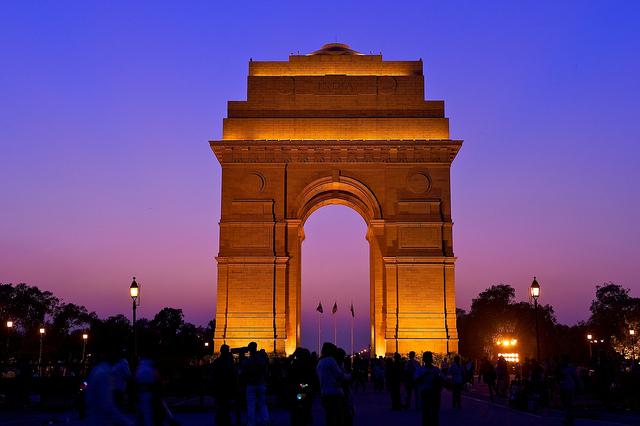Improving on zero: Australia and India attempt strategic convergence
Posted By Graeme Dobell on August 12, 2016 @ 06:00

In the 20th century, Australia’s strategic relationship with India was so frigid it was in negative territory for decades. In the 21st century, Australia and India have begun to attempt strategic convergence. That rapid shift from negative to positive means the big change in Australia’s strategic perceptions this century has been about India.
By contrast, the same thought about China’s strategic rise throbs consistently from the 2000 Defence White Paper (‘the most critical issue for the security of the Asia Pacific’) through the 2009, 2013 and 2016 White Papers. The worry just keeps intensifying.
Today ASPI publishes my Strategy paper on the big shift in Oz thinking about what it can do with an Asian giant: Improving on zero: Australia and India attempt strategic convergence [1].
India no longer sees Australia as merely a strategic stooge of the US. And Australia is starting to accord India the importance India always saw as its right. Those are big changes in attitude and policy—and in the two countries’ understanding of each other’s interests.
Strategy: The Australia–India strategic relationship was in zero territory—often in negative mode—for much of the 20th century; indeed, effectively since India’s independence. In the 21st century, though, Australia and India can reach for greater strategic convergence, building on:
- growing bilateral cooperation;
- Australia’s alliance and India’s quasi-alliance with the US;
- a shared vision of the Indo-Pacific, in which Australia gives explicit acknowledgement to India’s importance while India starts to understand Australia’s obsession with Southeast Asia; and,
- responses to China’s power.
People: Australia in the 21st century can have a set of relationships with India based on people as much as on economic and strategic need. Ahead of strategy or trade, migration is changing Australian and Indian conceptions of each other. Australia has a burgeoning Indian diaspora—India now ranks fourth in the list of the top 10 countries of birth [2] of Australia’s population.
Economics and trade: As China slows economically, Australia turns to India. The negotiation of an Australia–India free trade deal—a Comprehensive Economic Cooperation Agreement [3]—aims to match the bilateral agreements Australia reached with China, Japan and South Korea. In the 21st century, India–Australia two-way trade in goods and services has doubled in annual value to $15 billion—still small beer when compared to the figure of $150 billion for our trade with China, but with great potential for growth.
Improving on zero: The previous negative relationship was based on a lot of hard history (White Australia, the Cold War, alliance versus non-alignment and India’s nuclear weapons status).
New Delhi may not yet give Canberra much credit for independent thought or action. But being rusted on to the US no longer causes India to dismiss Australia as essentially irrelevant in the geopolitical and defence discussion.
India seeks greater bilateral defence cooperation with Australia as an Indian Ocean actor with some useful assets. See this, partly, as India slowly responding to Australia’s long-held aspirations to improve naval cooperation.
More importantly, it reflects an Indian aspiration that must be translated into military capability. India needs to muscle up if it hopes to fulfil its core beliefs about its central role in the Indian Ocean.
India is now reaching towards a quasi-alliance with the US, having already created the forms of a strategic partnership. True, it’s still very quasi and not worthy of the term ‘alliance’. Yet in the slow-moving realms of strategic realignments, the US–India partnership has been built in quick time. What the US and India have done together in the 21st century is a huge shift from the harsh words and sharp distrust of the 20th century.
Broadening the lens from bilateral to multilateral adds to the sense of change. The multilateral focus brings in the strongest US allies in the region—Japan and Australia.
Japan and Australia long traded at a strategic discount in New Delhi precisely because of their US alliances; now those alliance memberships add a little lustre. The negative has gone positive. India’s non-aligned colours fade as New Delhi’s realist core beats ever more openly
Myriad examples, big and small, illustrate how difficult things were. That past counsels caution about the speed or extent of the strategic convergence that can be achieved. Still, this time it’s different—our astigmatism and the antagonisms should not derail the opportunity, and the need, to see each other clearly and do much more together.
Article printed from The Strategist: https://aspistrategist.ru
URL to article: /improving-zero-australia-india-attempt-strategic-convergence/
URLs in this post:
[1] Improving on zero: Australia and India attempt strategic convergence: https://www.aspistrategist.ru/publications/improving-on-zero-australia-and-india-attempt-strategic-convergence
[2] countries of birth: http://www.abs.gov.au/ausstats/[email protected]/mf/3412.0
[3] Comprehensive Economic Cooperation Agreement: http://dfat.gov.au/trade/agreements/aifta/pages/australia-india-comprehensive-economic-cooperation-agreement.aspx
Click here to print.